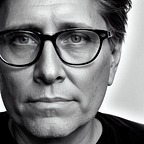The Next Sense: Technology’s Augmentation of Human Perception
The human touch is getting better.
GPT Summary: In the 21st century, a “next sense” is emerging, born from the symbiosis of technology and human perception, with transformative implications in medicine. Advanced imaging technologies, augmented by AI, are expanding the boundaries of sight, while digital stethoscopes and high-resolution ultrasound are revolutionizing auditory diagnostics. The sense of touch is also being redefined through robotic-assisted surgery and advanced prosthetics. Even taste and smell are being digitized for quality control and disease detection. Large Language Models like GPT-4 are extending this transformation into the cognitive realm, excelling in medical diagnostics and education. This “next sense” is not merely an enhancement but a fundamental shift, redefining healthcare and expanding the scope of human capabilities. It represents a harmonious blend of technology and sensory experience, shaping the future of medicine and human potential.
In the unfolding tapestry of the 21st century, a new sense is emerging. It’s not a sixth sense shrouded in mystery, but a “next sense” born from the fusion of technology and human perception. This next sense is not just an enhancement; it’s a transformation, particularly evident in the field of medicine.
Seeing Beyond the Human Eye
The realm of sight has been expanded through medical imaging technologies like MRI, CT scans, and 3D ultrasound. These tools allow medical professionals to peer into the human body with unprecedented clarity and supported by pattern detection of AI. Augmented Reality (AR) takes this a step further, overlaying digital information onto the physical world, guiding surgeons through complex procedures with real-time data. The once invisible becomes visible, opening new horizons in medical care.
The Unheard Becomes Audible
The sense of hearing is undergoing a similar revolution. Digital stethoscopes are transforming cardiac and pulmonary care by amplifying sounds, filtering noise, and recording auditory data. These advanced tools enable healthcare providers to detect subtle abnormalities and monitor conditions with precision, making an auditory expert out of any novice.
Ultrasound technology, once confined to specialized medical settings, is now a versatile tool for both advanced diagnostics and practical applications. High-resolution ultrasound imaging provides detailed insights into soft tissues, aiding in the diagnosis of various medical conditions. And handheld ultrasound devices make this technology accessible at the point of care, even in remote locations, for quick assessments, interventions, and monitoring.
Feeling the Digital World
The sense of touch is also being redefined. Robotic-assisted surgery with haptic feedback provides surgeons with a tactile sense of the operation, increasing precision. Advanced prosthetics offer sensory feedback, allowing amputees to feel pressure and temperature. The digital world is no longer intangible; it can be felt and manipulated.
Sensing the Invisible
Taste and smell are being explored through electronic tongues and noses used in food and pharmaceutical industries for quality control. Research is underway to develop devices that can “smell” diseases for early detection. The invisible becomes tangible, and the once elusive senses are now within our technological grasp.
The Revolution of LLMs in Medicine: the Emergence of GPT-4
The integration of technology with human senses is not confined to the physical realm. The cognitive aspects of technology, particularly Large Language Models (LLMs), are orchestrating the other five senses to provide an integrated cognitive and sensory experience. By processing and interpreting vast amounts of data, LLMs like GPT-4 are enhancing our understanding of the world, bridging the gap between sensory input and cognitive insight. This synergy is especially evident in the field of medicine, where LLMs are revolutionizing diagnostics, treatment, and patient care.
GPT-4, a state-of-the-art example of LLMs, is transforming the medical domain. Unlike specialized models, GPT-4 is a general-purpose model, not explicitly designed for medical problems or clinical tasks. Yet, its performance in the medical field is extraordinary.
GPT-4’s capabilities have been analyzed using official practice materials for the USMLE, a three-step examination program in the United States for assessing clinical competency and granting licensure. Its performance has also been evaluated on the MultiMedQA suite of benchmark datasets.
Experiments reveal that GPT-4 exceeds the passing score on United States Licensing Exam (USMLE) by over 20 points without specialized prompt crafting. It outperforms earlier general-purpose models and those specifically fine-tuned on medical knowledge. Furthermore, GPT-4 demonstrates a much-improved ability to predict the likelihood that its answers are correct.
Qualitative exploration of GPT-4’s behavior highlights its ability to explain medical reasoning, personalize explanations to students, and craft new counterfactual scenarios around medical cases.
The implications of these findings are significant, opening doors for GPT-4’s potential uses in medical education, assessment, and clinical practice. The attention to challenges of accuracy and safety ensures responsible practice. And this revolution of LLMs in medicine is not a distant future; it’s happening now. GPT-4 is leading the way, showcasing how the integration of cognitive technology with human senses is not just enhancing care but redefining it.
Medicine at the Forefront: Sensing a New Era of Care
The “next sense” is about leveraging technology to augment human senses, enhancing the capabilities of healthcare professionals and improving patient outcomes. From digital stethoscopes to the analytical power of models like GPT-4, the synergy between technology and human senses is redefining medical care.
It’s a testament to human ingenuity and a beacon of what’s possible when we harness technology to transcend our natural limitations—a symphony composed of innovation, creativity, and vision. The future of medicine — and indeed, humanity — is being shaped by this technological harmony. The “next sense” is here, and it’s transforming how we perceive the world and ourselves.
This article was supported by Microsoft.
